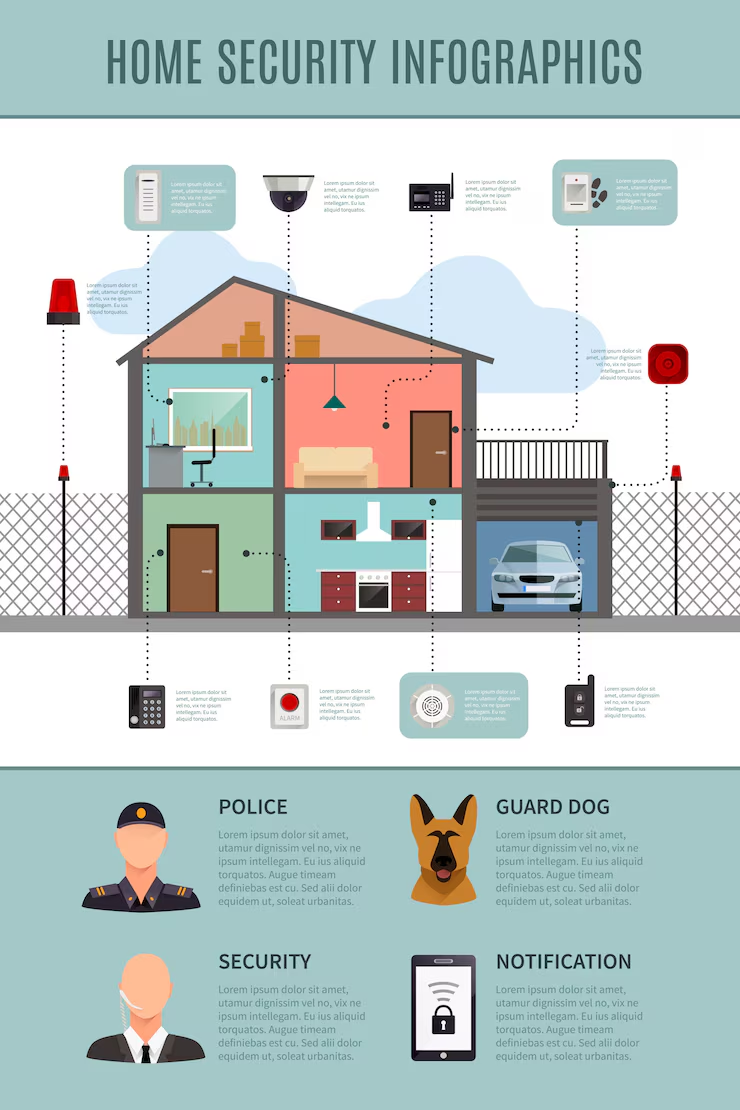CCTV Surveillance
CCTV Surveillance: Enhancing Safety and Monitoring with Smart Security
Introduction
In an increasingly security-conscious world, CCTV surveillance systems have become a foundational component of public safety, asset protection, and operational oversight. Whether for homes, businesses, or large-scale institutions, CCTV technology offers a reliable way to deter crime, monitor activities, and gather crucial video evidence.
Modern CCTV systems go far beyond simple video recording—they now incorporate AI, cloud storage, remote access, and integration with smart infrastructure.
What is CCTV Surveillance?
CCTV (Closed-Circuit Television) surveillance involves using video cameras to transmit a signal to a specific set of monitors or storage systems. Unlike broadcast TV, CCTV is a private system that’s only accessible to authorized users.
These systems are commonly used for:
Theft prevention
Employee monitoring
Perimeter security
Traffic and public safety monitoring
Remote site surveillance
Key Components of a CCTV System
Cameras
Available in various types: dome, bullet, PTZ (pan-tilt-zoom), thermal, and IP cameras.Digital Video Recorder (DVR) or Network Video Recorder (NVR)
Used to store footage and manage data from analog or IP cameras respectively.Display Monitors
Used for live monitoring or playback.Cables & Power Supply
Supports connectivity between devices. Many modern setups use PoE (Power over Ethernet) to simplify installation.Storage
HDDs, SSDs, or cloud storage for video archiving and review.Software
Enables motion detection, facial recognition, license plate reading, and mobile access.

Types of CCTV Cameras
1. Analog CCTV Cameras
Traditional and cost-effective; connect to DVRs via coaxial cables. Suitable for small-scale or legacy systems.
2. IP Cameras (Network Cameras)
Transmit video over the internet; support HD/4K recording, remote access, and smart analytics.
3. PTZ Cameras
Can be remotely controlled to pan, tilt, and zoom. Ideal for monitoring large areas.
4. Thermal Cameras
Detect heat signatures and are used in dark or low-visibility conditions.
5. Wireless Cameras
Offer flexibility during installation and are commonly used for home security.
Advantages of CCTV Surveillance
Crime Deterrence
Visible cameras discourage theft, vandalism, and unauthorized access.Real-Time Monitoring
Live feeds can be monitored remotely via mobile apps or desktops.Evidence Collection
High-definition footage provides valuable evidence in investigations or legal disputes.Operational Efficiency
Businesses can monitor employee productivity, compliance, and safety protocols.Remote Access
IP-based systems allow 24/7 monitoring from anywhere in the world.Integration with Alarms and Smart Systems
Can be linked with motion detectors, alarms, access control, and AI analytics.
Common Applications of CCTV Systems
Residential Buildings
Monitoring entrances, driveways, garages, and common areas.Commercial Premises
Retail stores, warehouses, banks, offices, and shopping malls.Public Infrastructure
Airports, highways, public transport stations, government buildings.Industrial Sites
Construction zones, manufacturing plants, power stations, mining sites.Education & Healthcare
Campus safety, hospital corridors, parking areas, and entrances.
Smart CCTV Surveillance Features (2025)
AI-Powered Video Analytics
Detect suspicious behavior, loitering, crowd formation, or perimeter breaches.Facial Recognition & Biometric Matching
Identify individuals or flag known offenders.License Plate Recognition (LPR)
Used in parking management, traffic monitoring, and gated access control.Cloud Storage & Video Backup
Enables easy retrieval, long-term storage, and data loss prevention.Smart Alerts
Instant notifications sent to security teams or property owners on detection of activity.
CCTV vs IP Surveillance Systems
| Feature | Analog CCTV | IP Surveillance |
|---|---|---|
| Image Quality | Standard Definition | High Definition (HD/4K) |
| Cabling | Coaxial cables | Ethernet (PoE) |
| Storage | DVR | NVR / Cloud |
| Remote Access | Limited | Full (via app or browser) |
| Smart Features | Basic motion detection | AI, analytics, alerts |
| Installation Cost | Lower | Slightly higher |
| Scalability | Limited | Highly scalable |
Security and Compliance Considerations
Ensure GDPR, HIPAA, or local data protection compliance
Define clear policies on who can view or access footage
Regularly update firmware and use encrypted connections
Position cameras responsibly to avoid privacy violations